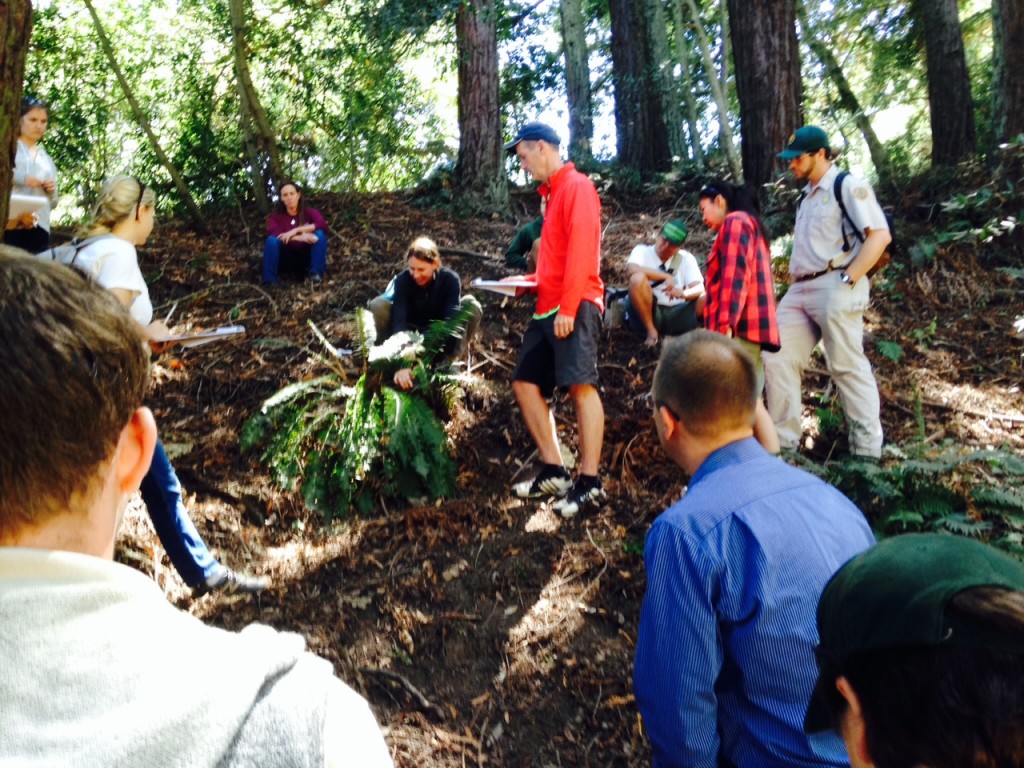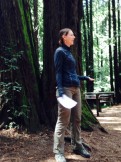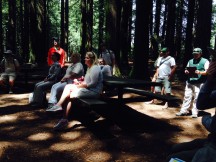
The first rainfall of autumn has already soaked in or evaporated, leaving our forests and grasslands thirsty for more. My thoughts turn to the mighty redwoods gracing our East Bay hills. Oftentimes, as we lead children on field studies in these forests, I’ll have them “shake hands” with a sword fern and thank it for the petroleum products we use today. With over 200 million years of history on our planet, the ferns and redwoods were large contributors to the planet’s reserves of gas and oil. Ironically, those same petroleum products are large contributors to climate change.

Recently, the East Bay Regional Park naturalist team participated in a citizen science training with the Save the Redwoods League (SRL). The “Fern Watch” study has sites set up throughout Northern California to monitor how climate change may be impacting the redwood forest. One of the study sites is in Redwood Regional Park in the Oakland Hills. You can find a map of these study site locations on SRL’s website. The naturalists learned how sword fern fronds are longer where there is higher rainfall and fog drip in forests farther north, and shorter in our area where there is comparatively less rainfall and fog. The idea for the new Fern Watch study is to capture baseline data, collected by citizen science teams, to monitor how and where fern frond lengths change over time as rainfall and fog events change.
Sword ferns, along with eight other redwood ecosystem species, are especially adept at absorbing moisture — fog as well as rain — through their leaves as well as their roots. Emily (Limm) Burns, Director of Science for SRL studied this foliar uptake phenomenon in 2004 and reported her findings in “Understanding the Physiological Consequences of Fog for Redwood Forest Plants.” The study may provide important information to scientists to predict how the redwood ecosystem will react to less moisture from fog events as well as rain.

If you’d like to participate in this citizen science initiative, go to the “Fern Watch” page on the SRL website. It can turn an outing in the woods into a science safari and you might just help out our forest, too. You can also check the East Bay Regional Parks website to find a naturalist program where you can participate in a study with our staff or just join us for a walk in the woods.
